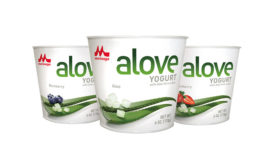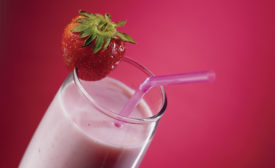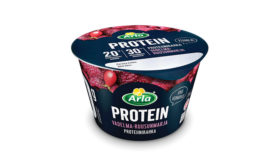Articles by Kimberly Decker
You can set your watch by the appearance of McDonald’s Shamrock Shake or Starbucks’ pumpkin spice latte. Use limited-time offers to create excitement for your dairy foods and beverages.
Read More
Sticky business
On the trail of acacia gum: Part 3. How is an acacia orchard like a vineyard?
Alland & Robert can trace the ingredient to the plot where the gum was harvested.
April 21, 2017
Sticky business
On the trail of acacia gum: Part 2. A visit to the orchard
The acacia tree can produce 250 grams (a little more than one-half pound) of gum annually.
April 14, 2017
Sticky business
On the trail of acacia gum: from Senegal to your ice cream cone
Acacia gum is an effective stabilizer and encapsulation medium. It forms films, builds texture, binds and coats.
April 7, 2017
What do added sugars add up to?
Consumer confusion, perhaps. But declaring added sugars on Nutrition Facts panels will be required by July 2018. Here are ways to cut down on sugar declarations without sacrificing sweetness.
April 7, 2017
Experts give advice on clean-label inclusions for dairy
Milk is clean, but what about those other ingredients in yogurt or ice cream? Is there such a thing as a clean-label nut, chocolate or inclusion? We asked a few experts.
February 10, 2017
Protein benefits everyone, from children to seniors
It’s not just elite athletes who need protein. The ingredient holds benefits for everyone, from children to seniors and from recreational athletes to those seeking to lose weight.
January 30, 2017
Building texture into sugar-reduced products
Sugar slashers take note: building back sweetness is only half the equation. You have to tend to texture, too, to deliver a sensory experience.
January 5, 2017
Balancing health and indulgence in frozen desserts
Some consumers choose full-fat foods with a clean label over healthier lower-fat versions made with ‘chemical-sounding’ ingredients.
December 6, 2016
State of the Industry 2016: Ingredients will come clean in 2017
Clean-label formulation can’t come at the expense of functionality. Those in the R&D lab need to consider the ramifications of swapping out traditional ingredients for alternatives.
November 21, 2016
Stay ahead of the curve. Unlock a dose of cutting-edge insights.
Receive our premium content directly to your inbox.
SIGN-UP TODAYCopyright ©2025. All Rights Reserved BNP Media.
Design, CMS, Hosting & Web Development :: ePublishing









